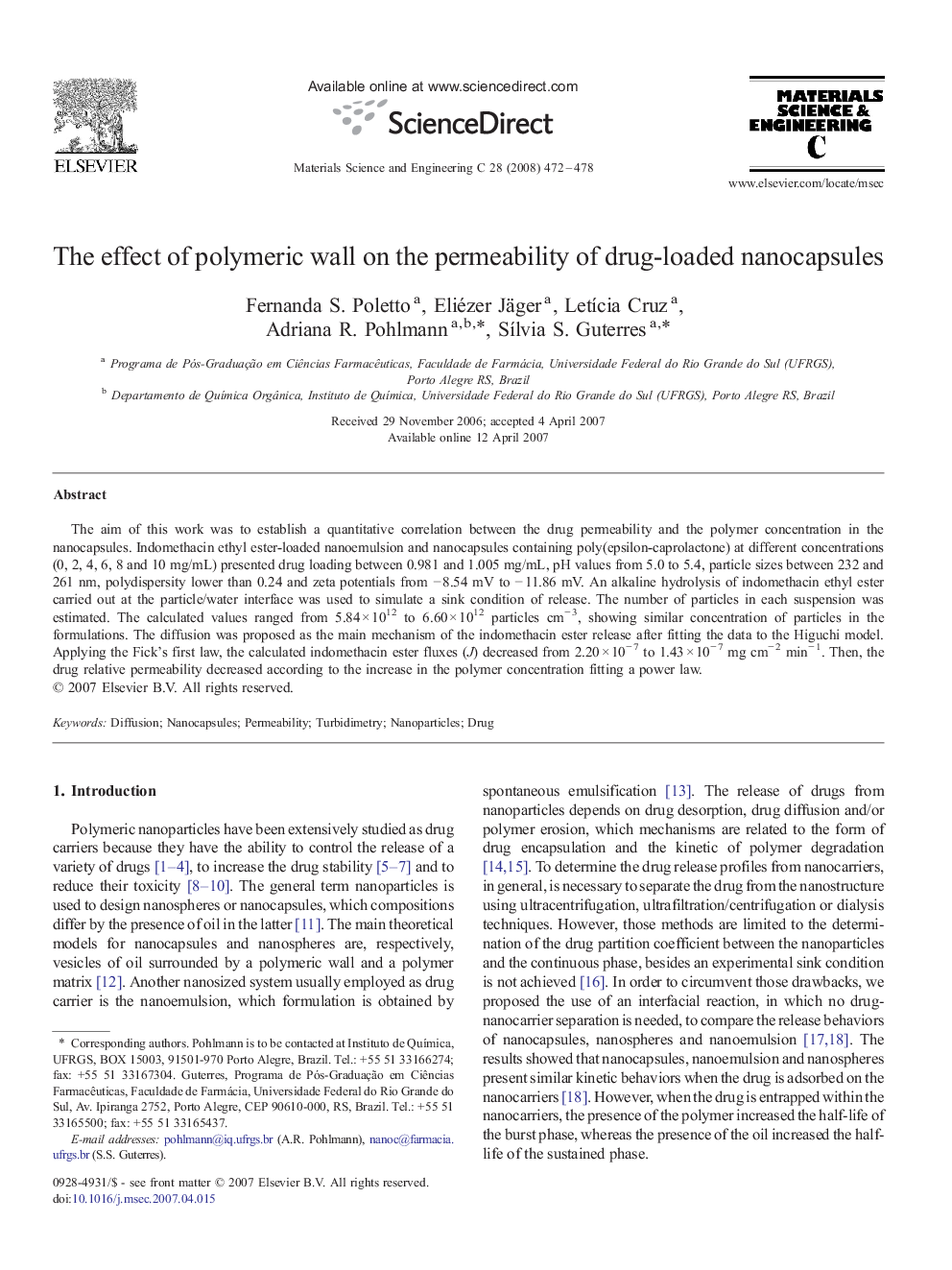| Article ID | Journal | Published Year | Pages | File Type |
|---|---|---|---|---|
| 1431175 | Materials Science and Engineering: C | 2008 | 7 Pages |
The aim of this work was to establish a quantitative correlation between the drug permeability and the polymer concentration in the nanocapsules. Indomethacin ethyl ester-loaded nanoemulsion and nanocapsules containing poly(epsilon-caprolactone) at different concentrations (0, 2, 4, 6, 8 and 10 mg/mL) presented drug loading between 0.981 and 1.005 mg/mL, pH values from 5.0 to 5.4, particle sizes between 232 and 261 nm, polydispersity lower than 0.24 and zeta potentials from − 8.54 mV to − 11.86 mV. An alkaline hydrolysis of indomethacin ethyl ester carried out at the particle/water interface was used to simulate a sink condition of release. The number of particles in each suspension was estimated. The calculated values ranged from 5.84 × 1012 to 6.60 × 1012 particles cm− 3, showing similar concentration of particles in the formulations. The diffusion was proposed as the main mechanism of the indomethacin ester release after fitting the data to the Higuchi model. Applying the Fick's first law, the calculated indomethacin ester fluxes (J) decreased from 2.20 × 10− 7 to 1.43 × 10− 7 mg cm− 2 min− 1. Then, the drug relative permeability decreased according to the increase in the polymer concentration fitting a power law.
